Checking Equipment after not Towing for Months
Winter, the time where we hunker down and don’t go on quite as many adventures. Especially towing adventures, the ice and snow had you putting away your toys for a few months but the time has come to get going again! Leaving anything out in the cold or just out without care may have left it to become a little less than perfect.
If you haven’t used your hitch in a few months, it's time to give it a thorough evaluation before hooking up your trailer, boat, or RV again for the coming summer months! The importance of checking your equipment is easy to know. Checking your hitch can be the difference between reaching point B with all you left point A with. The Hitch is the most important piece of your towing set up, it is the connection between what you are towing and your vehicle. Taking a few minutes to check everything can help avoid any trailer-related emergencies that could delay your adventure.
Safety Checklist:
This checklist is for those times where it has been a few months and you need to add a few extra steps into the mix. Following through this checklist will help to ensure that your hitch is ready to tow when you are!
- If you uninstalled your hitch for the winter, examine your receiver tube opening. Check for road dirt, salt, or any metal fragments inside the receiver. Remove all before reinstalling your hitch.
- Prior to installing your hitch, confirm the shank is free of any cracks or other forms of metal fatigue. BulletProof Hitches are manufactured from the highest quality steel and pre-treated prior to the powder coating process to ensure maximum durability and corrosion resistance.
- Make sure there is no wear to the pins or pin holes. Ensure the security of your locking pins as well.This means using a penetrating oil inside the keyhole and turning the key back and forth 5-6 times to ensure the locking mechanism is properly functioning and lubricated.
- Next check your trailer couplers. Check that the housing is in good condition the same way you examined your shank and receiver tube.
- On the coupler check that all locks and adjustment screws are able to be set correctly to ensure a tight and secure fit between the coupler and dual ball. This will help to prevent the trailer becoming detached from the dual ball while towing.
- Finally, start testing those connections!. Install your hitch as normal. Apply anti-friction grease to both the dual ball and the coupler. Place the coupler over the dual ball and secure it!
- Trailer time, let's start taking a look at this important piece of equipment. Do you remember the last time you used grease on your trailer bearings? How often should you grease your trailer bearings? The answer, about once a year (every 12 months) or 12,000 miles!
- Take a look at your tires now, generally trailer tires need to be replaced every 5-6 years. Check for excessive wear on any and all of your tires.
- Now let's monitor the pressure. All of your trailer tires should be inflated to the max psi stated on the side wall that is on the sidewall of your tire. Under inflating the tires will lower the weight capacity for that tire to a level that is unable to be monitored. Make sure all the trailer tires are inflated to the same stated air pressure amount on the tire.
- Once you have secured the coupler to your dual ball start checking the trailer wires. Ensure that there is no fraying of your wires, the fraying can expose important pieces and expose them to the elements. Cover them with electrical tape until you are able to replace IF they are still currently functional. Once you have plugged in your trailer wires ensure that all lights are working to their full capability. Brake lights and turn signals are very important for the other drivers on the road!
You’ve checked and double checked now you are ready to hit the road! After months of inactivity, performing both your standard safety checks as well as additional checks is extremely important to ensure that you don’t have any trouble towing your trailer from point A to point B. Now before you go, check your trailer registration and insurance is up to date.
Happy Towing!

